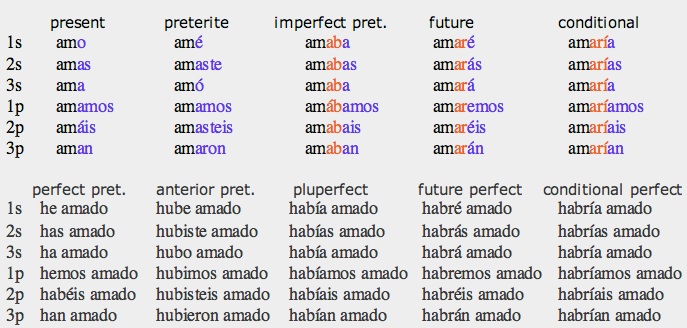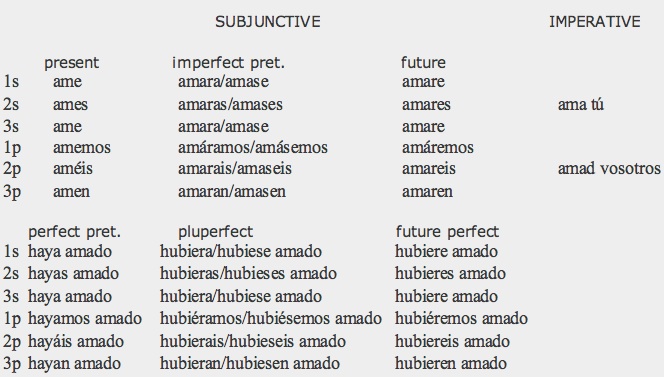An insatiable appetite for ancient and modern tongues


Alternative Name: Castellano (Castilian).
Classification: Indo-European, Italic, Romance.
Overview. Spanish is the most widely spoken Romance language and one of the largest of the world (3rd). It has spread to all continents and is the official language of 19 countries. It was born in the Iberian peninsula, from the Latin brought by the Roman conquerors, at the close of the first millennium CE. The dialect spoken in the north-central kingdom of Castile (Castilian) propagated to the entire peninsula thanks to the Christian Reconquest, becoming a national language and later an international one with the establishment of the Spanish Empire in the 16th century.
Distribution. Spanish is spoken in the five continents, mainly in Europe and America but also in Africa, Asia and Oceania. Spanish is dominant in Spain (including the Canary Islands and the enclaves of Ceuta and Melilla on the north African coast), and in most of Latin America from Mexico to Argentina (with the exception of Brazil). It is also the main language of Puerto Rico and is spoken by substantial minorities in parts of the USA. There is also a good number of Spanish speakers in Equatorial Guinea, Andorra and the Balkan countries, Israel, the Philippines and Australia.
Speakers. Native speakers of Spanish number around 430 million. They live in the following countries (millions of speakers):
Mexico
Colombia
Spain
Argentina
USA*
Venezuela
Peru
Chile
Ecuador
Cuba
Dominican Republic
Guatemala
Honduras
104.0
46.0
45.0
39.7
37.0
29.4
24.2
17.0
13.2
11.5
10.4
9.0
7.5
El Salvador
Bolivia
Nicaragua
Costa Rica
Paraguay
Uruguay
Panama
Equatorial Guinea
Brazil
Philippines
Canada
Belize
6.3
5.8
5.8
4.7
4.2
3.4
3.3
1.1
0.5
0.4
0.2
0.1
-
*including Puerto Rico
Status: Spanish is the national language of Spain, of 18 countries of Latin America (Mexico, Guatemala, Cuba, Dominican Republic, Nicaragua, Honduras, El Salvador, Costa Rica, Panama, Colombia, Venezuela, Ecuador, Peru, Bolivia, Paraguay, Uruguay, Argentina, Chile) and of Equatorial Guinea. It is also one of the 23 official languages of the European Union and one of the six official languages of the United Nations.
Varieties. Modern standard Spanish developed from the Castilian dialect but regional dialects subsist in Aragon, Navarre, Leon, Asturias, Santander, and Andalusia. Latin-American Spanish has a number of regional dialects, most of which (especially the coastal ones) have a phonology similar to Andalusian as many early settlers were from the kingdom of Seville. Ladino or Sefardi is an archaic form of Castilian Spanish spoken by Sephardic Jews, expelled from Spain, in the Balkans, the Middle East, North Africa, Greece, and Turkey that is almost extinct now; it is written in Hebrew characters.
Oldest Documents
late 10th c. Glosas Emilianenses, glosses on a Latin text in a Navarro-Aragonese dialect.
c. 1150. The epic poem Cantar del Mío Cid (Song of My Cid) is the first literary work in Spanish.
Phonology
Vowels. Spanish has an uncomplicated vowel system composed of five simple, short vowels and five diphthongs.
-
a) Monophthongs (5):

-
b) Diphthongs (5): ai, au, ei, eu, oi
Consonants (21). Spanish has 21 consonants, including 8 stops and affricates, 4 fricatives, 3 nasals, 6 liquids and glides. The language is distinguished for having two lateral liquids (l-sounds) articulated at different places (alveolar l and palatal λ), and two rhotics (r-sounds) articulated at the same place (one is a tap [ɾ] and the other a trill [r]).

Stress: It may fall on the last syllable, on the penultimate or on the antepenultimate. When it falls on the antepenultimate syllable it is always marked but when it falls on the penultimate or last syllables it may be marked (with an acute accent) or not depending on the final letter. Monosyllabic words do not carry orthographic accent except in cases of ambiguity.
Script and Orthography
Spanish is written with a Latin script of 29 letters, two of which are digraphs (ch, ll):

-
•the voiced stops b, d, and g are pronounced intervocalically as [β], [ð], and [ɣ] or [x]. As they are in complementary distribution, the latter are not true phonemes.
-
•the voiceless palatal affricate tʃ is written ch.
-
•the voiced palatal affricate dʒ, present in some dialects, is written y or with the digraph ll (which is otherwise pronounced ʎ/j).
-
•the dental fricative θ is written c or z.
-
•the velar fricative x is written g or j.
-
•the palatal nasal ɲ is written ñ.
-
•the alveolar flap ɾ is written r.
-
•the alveolar trill r is written with the digraph rr or with r (word initially or after some consonants).
-
•the palatal liquid ʎ is written with the digraph ll (which in some dialects is pronounced dʒ/j).
-
•the glide j is written y or ll.
Morphology
-
Nominal. Adjectives agree with their nouns in gender and number.
-
•case:the case system of Latin has been completely lost except for pronouns which have subject, object, possessive, and prepositional forms.
-
•gender: masculine, feminine. Most nouns end in o or a. Nouns ending in o are masculine and those ending in a are feminine with a few exceptions (e.g. planeta [‘planet’] and día [‘day’] are masculine, mano [‘hand’] and foto [‘photo’] are feminine). Nouns that have other endings may be either masculine or feminine:
-
(m) puente (‘bridge’), (m) cine (‘movie theater’), (f) fuente (‘spring’), (f) carne (‘meat’)
-
(m) ataúd (‘coffin’), (m) alud (‘avalanche’), (f) pared (‘wall’), (f) ciudad (‘city’)
-
(m) papel (‘paper’), (m) mantel (‘tablecloth’), (f) cárcel (‘jail’), (f) miel (‘honey’)
-
(m) doctor (‘doctor’), (f) flor (‘flower’); (m) arroz (‘rice’), (f) voz (‘voice’)
-
•number: singular, plural. Plurality is usually marked by adding -s or -es to the singular. Some nouns have only a singular form, others only a plural one, and still others have identical singular and plural forms.
-
casa (‘house’) → casas (‘houses’)
-
techo (‘roof’) → techos (‘roofs’)
-
pared (‘wall’) → paredes (‘walls’)
-
esquí (‘ski’) → esquíes (‘skis’)
-
sed (‘thirst’) → no plural form
-
no singular form → honorarios (‘fee’)
-
virus (‘virus’) → virus (‘viruses’)
-
•pronouns: personal, demonstrative, interrogative, relative, indefinite, reflexive.
-
Personal pronouns are inflected for case (subject, object, possessive, prepositional), gender (except 1s, 2s) and number. The prepositional forms are used with a variety of prepositions in order to mark a number of other syntactical functions.

-
Note: le/les are used for indirect object.
-
Demonstrative pronouns distinguish three degrees (proximal, intermediate and distal) and are inflected for gender (masculine, neuter, feminine) and number. They can function also as demonstrative adjectives, except neuter pronouns.

-
The interrogative pronouns are:
-
•¿quién? (sg.)/¿quiénes? (pl.) are used to ask about a person and, thus, they are equivalent to ‘who?’
-
•¿qué? is used to ask about a thing and is equivalent to ‘what?’. It is invariable.
-
•¿cuál? (sg.)/¿cuáles? (pl.) are employed to specify one or more people or things from a definite set; they are equivalent to ‘which?’
-
•¿cuánto (masc. sg.)?/¿cuánta (fem. sg.)?/¿cuántos (masc. pl.)?/¿cuántas (fem. pl.)? are used to specify an amount or number, and are equivalent to ‘how much?’ or ‘how many?’
-
Relative pronouns are: quien (sg)/quienes (pl) [‘who’], que [‘that’], cual (sg)/cuales (pl) [‘which’], cuyo (sg)/cuyos (pl) [‘whose’], donde [‘where’]. They are similar to the interrogatives but without accent.
-
Indefinite pronouns are varied. They can function also as adjectives and are inflected for person and number. They include: uno (‘one’), alguno (‘someone, something’), ninguno (‘no one’), mucho (‘much’), todo (‘all’), otro (‘another’), etc.

-
Reflexive pronouns are identical to object pronouns, except in the 3rd person:
-
•articles: Spanish has indefinite and definite articles which distinguish gender and number. Indefinite: un (m.s), una (f.s), unos (m.p), unas (f.p). Definite: el (m.s), la (f.s), los (m.p), las (f.p).
-
Verbal. In contrast with the nominal system, the verbal system of Spanish is highly inflected. There are also many irregular verbs. Spanish has two words for the verb 'to be'. Ser is usually equivalent to the copula, denoting an inherent quality, while estar refers to a resultant state.
-
•person and number: 1s, 2s, 3s; 1p, 2p, 3p.
-
•tense: present, preterite (simple past), imperfect preterite, future and conditional are the basic tenses.
-
Each has a compound tense formed with the auxiliary verb 'haber' + the past participle: perfect preterite, anterior preterite, pluperfect, future perfect and conditional perfect.
-
The conjugation of the verb amar ('to love') is:

-
Personal endings are marked in blue, and tense markers in red.
-
•aspect: imperfective, perfective.
-
•mood: indicative (all tenses), subjunctive (present, imperfect preterite, future and their compound tenses [made with 'haber'+ the past participle]), imperative (present). The conjugation of the verb 'amar' in the subjunctive and imperative is:

-
•voice: active, passive and reflexive. The passive voice is formed with the auxiliary verb ser ('to be') + past participle; the agent is introduced by the preposition por ('by').
-
El hombre fue encontrado por la policía
-
the man was found by the police
-
•non-finite forms: infinitive, compound infinitive, gerund, compound gerund, past participle. For example:
-
infinitive: amar
-
compound infinitive: haber amado
-
gerund: amando
-
compound gerund: habiendo amado
-
past participle: amado
-
The infinitive is used with modal verbs or to express purpose accompanied with the preposition para (‘for’). The gerund is always dependent on another verb and it expresses an action simultaneous to that of the main verb; the compound gerund indicates that an action happened before that of the main verb. The past participle has a passive sense and it behaves both as adjective and verb.
Syntax
Spanish is mainly a Subject-Verb-Object-Complement language. Subject pronouns may be dropped. Some sentences have no subject at all (e.g. nieva todos los días ['it snows everyday']). It uses prepositions to establish syntactical relations.
Most adjectives and genitives, as well as relative clauses, follow their head noun; adverbs follow the verb they modify. Adjectives and articles agree with their nouns in gender and number, and the verb agrees with the subject in person and number. For example:
-
La casa vieja de la esquina que demolieron ayer engalanaba el barrio.
-
the house old of the corner that (they) demolished yesterday adorned the quarter
-
black: subject; red: main verb (imperfect preterite 3s); blue: direct object;
-
underlined: genitive; italics: relative clause
Here, the main verb agrees with the subject while the subject of the relative clause ('ellos') has been dropped. Definite articles (la, el) precede their nouns (casa, esquina, barrio) agreeing with them in gender and number. The adjective (vieja) follows its noun (casa) agreeing with it in gender and number (feminine singular). The genitive is marked by the preposition de ('of') while the relative clause is introduced by the relative pronoun que ('that').
Basic Vocabulary
one: uno
two: dos
three: tres
four: cuatro
five: cinco
six: seis
seven: siete
eight: ocho
nine: nueve
ten: diez
hundred: cien
father: padre
mother: madre
brother: hermano
sister: hermana
son: hijo
daughter: hija
head: cabeza
face: cara
eye: ojo
hand: mano
foot: pie
heart: corazón
tongue: lengua
Key Literary Works (forthcoming)
-
© 2013 Alejandro Gutman and Beatriz Avanzati
Further Reading
-
-'Spanish'. J. N. Green. In The World's Major Languages, 197-216. B. Comrie (ed). Routledge (2009).
-
-A History of the Spanish Language. R. Penny. Cambridge University Press (2002).
-
-Gramática descriptiva de la lengua española, 3 vols. I. Bosque & V. Demonte (eds). Real Academia Española and Espasa-Calpe, Madrid (1999).
Spanish

Address comments and questions to: gutman37@yahoo.com
MAIN LANGUAGE FAMILIES
LANGUAGE AREAS
Languages of Ethiopia & Eritrea
LANGUAGES by COUNTRY
LANGUAGE MAPS
-
• America
-
• Asia
-
Countries & Regions
-
-
Families
-
• Europe
-
• Oceania